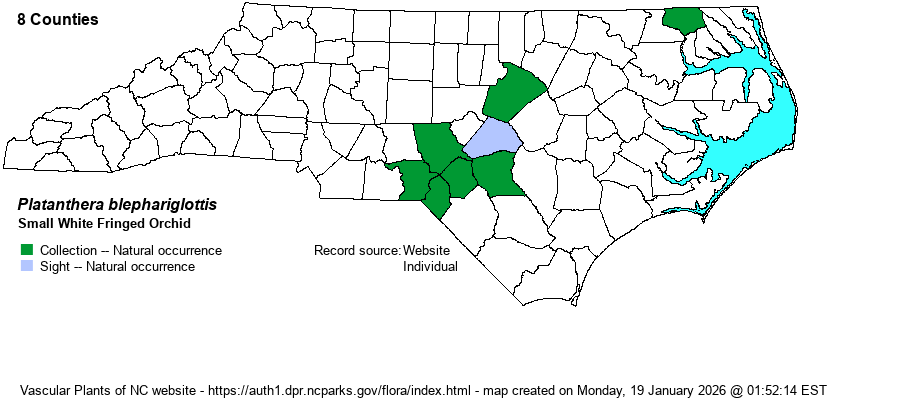| taxonName | relationship | relatedTaxonName | relatedTaxonRefText | relComments |
|---|
|
|
| Platanthera blephariglottis | = | Platanthera blephariglottis var. blephariglottis | Flora of North America (1993b, 1997, 2000, 2002a, 2002b, 2003a, 2004b, 2005, 2006a, 2006b, 2006c, 2007a, 2009, 2010) | |
| Platanthera blephariglottis | = | Platanthera blephariglottis var. blephariglottis | | |
| Platanthera blephariglottis | = | Platanthera blephariglottis var. blephariglottis | | |
| Platanthera blephariglottis | = | Platanthera blephariglottis var. blephariglottis | | |
| Platanthera blephariglottis | < | Habenaria blephariglottis var. blephariglottis | Radford, Ahles, and Bell (1968) | |
| Platanthera blephariglottis | < | Habenaria blephariglottis var. blephariglottis | Brown (2002)=Z. | |
| Platanthera blephariglottis | < | Habenaria blephariglottis var. blephariglottis | Fernald (1950) | (possiblymisapplied) |
| Platanthera blephariglottis | < | Habenaria blephariglottis | Godfrey and Wooten (1979, 1981) | |
| Platanthera blephariglottis | = | Blephariglottis blephariglottis | Small (1933, 1938) | (possiblymisapplied) |
| Platanthera blephariglottis | < | Platanthera blephariglottis | Wofford (1989) | |
| Platanthera blephariglottis | = | Blephariglottis albiflora | | |
| Source: Weakley's Flora |

